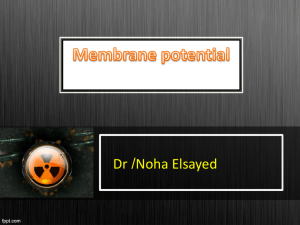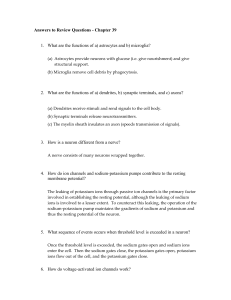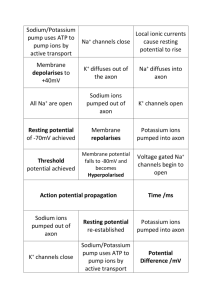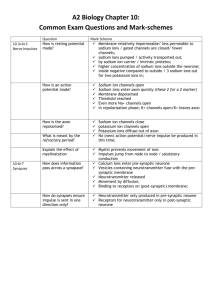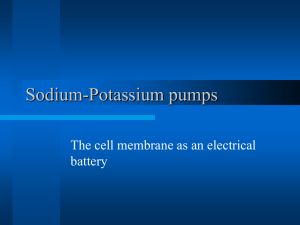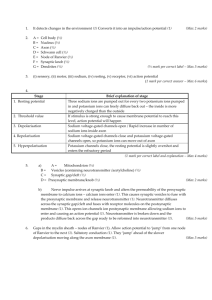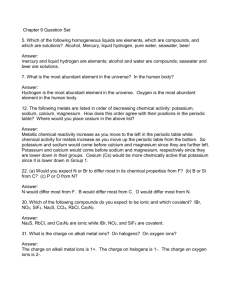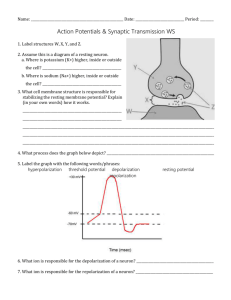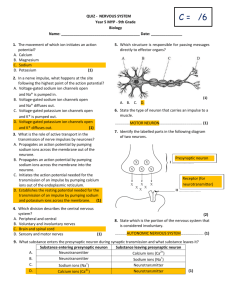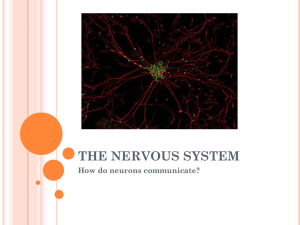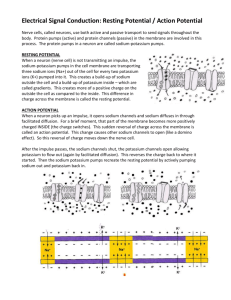Name Date Period ______ Sodium/Potassium Channels My
advertisement
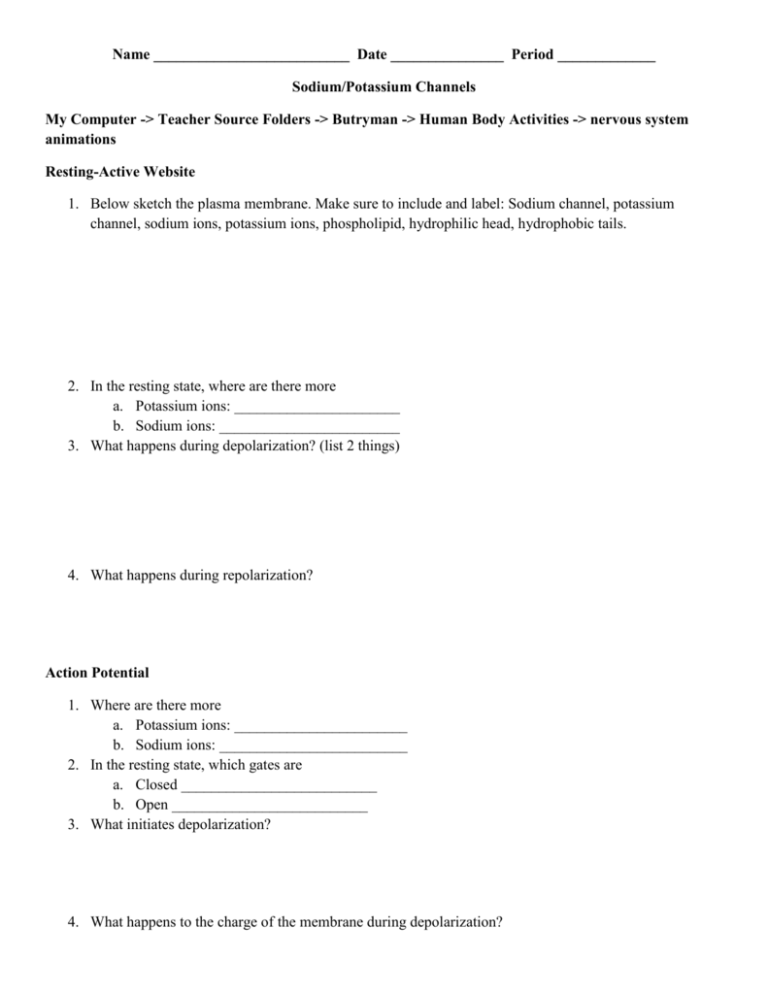
Name __________________________ Date _______________ Period _____________ Sodium/Potassium Channels My Computer -> Teacher Source Folders -> Butryman -> Human Body Activities -> nervous system animations Resting-Active Website 1. Below sketch the plasma membrane. Make sure to include and label: Sodium channel, potassium channel, sodium ions, potassium ions, phospholipid, hydrophilic head, hydrophobic tails. 2. In the resting state, where are there more a. Potassium ions: ______________________ b. Sodium ions: ________________________ 3. What happens during depolarization? (list 2 things) 4. What happens during repolarization? Action Potential 1. Where are there more a. Potassium ions: _______________________ b. Sodium ions: _________________________ 2. In the resting state, which gates are a. Closed __________________________ b. Open __________________________ 3. What initiates depolarization? 4. What happens to the charge of the membrane during depolarization? 5. Why does depolarization occur? 6. What causes the inactivation gates of the voltage-gated sodium ion channels to close? 7. Why do the sodium ions diffuse across the membrane? (think about what diffusion is) 8. What causes the membrane potential to become slightly more negative than resting state? Sodium Potassium Pump 1. A transport pump is an example of what type of transport? 2. What do active transport processes do? 3. What do active transport processes require? 4. Why is energy needed to move sodium ions from the inside to the outside of the cell (and potassium ions from the outside to the inside of the cell)? (don’t simply say “it’s active transport”) 5. What happens to ATP during this process? 6. What happens to the carrier protein when ATP is used? 7. How many sodium ions exit the cell? 8. How many potassium ions enter the cell? 9. What would happen if the carrier protein never changed its shape? Awesome animation of brain, neurons, epilepsy 1. What is each neuron composed of? 2. What part of the cell does the cell body send the message through? 3. Why is there a concentration gradient across the cell membrane? 4. What kind of charge do the intercellular proteins have? 5. Where is the concentration of potassium ions higher during the cell’s resting state? 6. Where is the concentration of sodium ions higher during the cell’s resting state? 7. What does the open potassium channels do for the cell during its resting state? 8. What happens when a neuron is stimulated? 9. What does the transmembrane potential change trigger in the cell? 10. What happens to the plasma membrane when all the sodium ions are moving into the cell at the beginning of the action potential? 11. What happens due to the outflux of potassium ions? 12. What causes the ionic gradient to reestablish? 13. What does myelin do for the action potential? 14. What happens when there is a hyper-excitability of the neuronal network? 15. What do some species use natural neurotoxins for? 16. What does the puffer fish’s TTX do to the action potential? 17. How does TTX inhibit the action potential?
